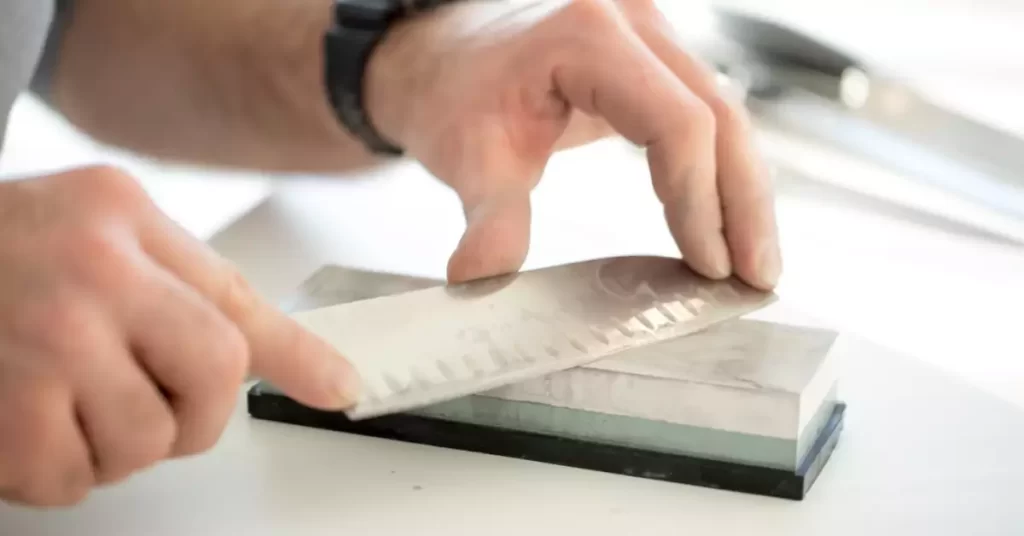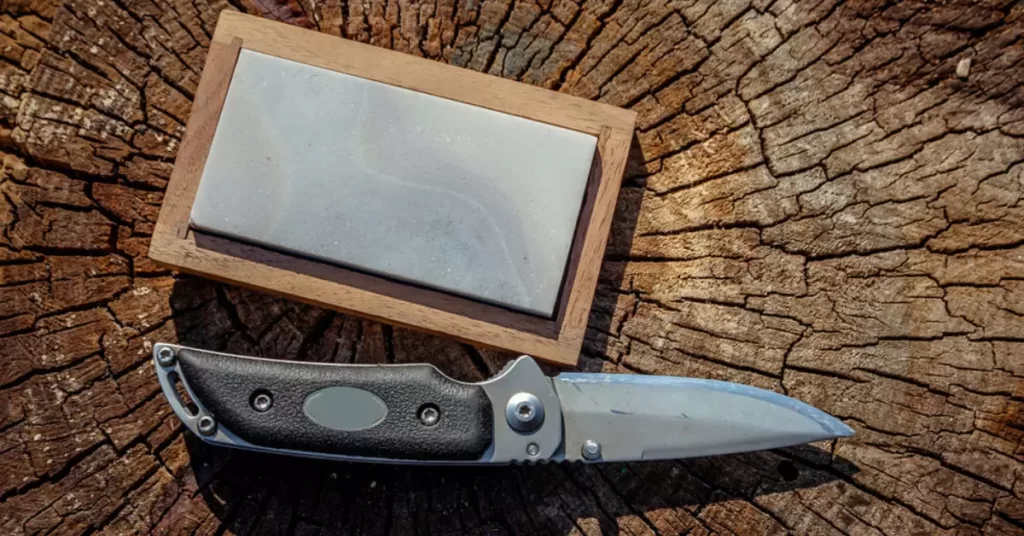The pursuit of a razor-sharp edge is a timeless art, and whetstones have long been the preferred tool for sharpening knives and tools.
But with various grits available, how do you choose the right one? And what grit whetstone should you use for kitchen knives?
In this comprehensive guide, we’ll delve into the world of whetstone grit and help you make an informed choice to suit your sharpening needs.
Understanding Whetstone Grit
Types of Grit
Whetstone grit is classified into three main categories:
- Coarse Grit (200-800): These whetstones are best for repairing damaged blades or creating a new edge on a very dull knife. They remove material quickly but can leave a rough edge.
- Medium Grit (1000-3000): Medium-grit stones are versatile and suitable for maintaining a sharp edge on knives that see regular use. They strike a balance between fast material removal and a smooth finish.
- Fine Grit (4000-8000): Fine-grit stones are used for honing and polishing an already sharp edge to a razor-sharp finish. They remove little material and leave a smooth, mirror-like edge.
Grit Numbering System
The grit of a whetstone is indicated by a number, which represents the size of the abrasive particles.
The higher the number, the smaller the particles and the finer the grit. Conversely, lower numbers signify larger particles and a coarser grit.

Why Grit Matters for Whetstones
Selecting the right grit is crucial for achieving the desired sharpness and edge quality. The wrong grit can lead to an uneven edge or excessive material removal, which can damage your blade.
In general, you’ll start with a coarser stone to shape the edge, then progress to finer stones to refine it.
How to Choose the Right Grit Whetstone
For Kitchen Knives
Coarse Grit (200-800): Use a coarse grit whetstone if your kitchen knife is extremely dull or damaged (e.g., chipped or nicked). Be cautious not to remove too much material, as this can weaken the blade.
Medium Grit (1000-3000): Most kitchen knives will benefit from using a medium grit whetstone for regular maintenance. This grit is ideal for maintaining a sharp edge and removing any small nicks or burrs. It’s also a good starting point for beginners.
3. Fine Grit (4000-8000): Use a fine grit whetstone to polish and refine the edge of your kitchen knife for a razor-sharp finish. This grit is ideal for those who want a mirror-like edge and don’t mind spending extra time and effort.
When choosing a whetstone for your kitchen knife, it’s also important to consider the material of the blade.
For example, harder steel knives (like those made of Japanese steel) will benefit from a finer grit whetstone, while softer steel knives (like those made of German steel) may require a coarser grit.
For Other Tools and Blades
The choice of grit for other tools and blades will depend on the type of blade and its intended use. In general, coarse grits are used for repairing or reshaping damaged blades, while fine grits are used for honing and polishing. For example:
- Chisels and plane blades: Coarse grits (200-800) are used for repairing chips and nicks, while medium grits (1000-3000) are used for general sharpening and maintenance.
- Axes and machetes: Coarse grits (200-800) are used for removing nicks and damage, while medium grits (1000-3000) are used for sharpening and fine grits (4000-8000) for polishing.
- Straight razors: Fine grits (4000-8000) are used for honing and polishing the blade to a razor-sharp finish.

Proper Use and Maintenance of Whetstones
To get the best results from your whetstone, it’s essential to use it correctly and maintain it properly. Here are some tips:
- Soak the whetstone in water for 10-15 minutes before use (unless it’s a diamond stone, which should not be soaked).
- Place the whetstone on a non-slip surface.
- Hold the blade at the correct angle (usually around 20 degrees) and move it back and forth along the stone, applying even pressure.
- Use a honing guide if you’re unsure about the correct angle.
- Rinse the stone frequently to remove debris and metal particles.
- After use, rinse the stone thoroughly and let it dry completely before storing it.
Tips for Whetstone Beginners
Sharpening with a whetstone can be a bit intimidating for beginners, but with some practice and patience, it’s a skill that can be mastered. Here are some tips for beginners:
- Start with a medium grit stone and work your way up to finer grits.
- Use a honing guide to help you maintain the correct angle.
- Use a marker to color the edge of your blade before sharpening so you can see where you’re removing material.
- Take your time and don’t rush the process.
- Practice on an old knife or tool before sharpening your best ones.
FAQs
Can I use a whetstone to sharpen serrated knives?
It’s not recommended to use a whetstone on serrated knives, as the uneven teeth make it difficult to maintain the correct angle. Instead, use a sharpening rod or a specialized serrated knife sharpener.
How often should I sharpen my kitchen knives?
This will depend on how often you use your knives and what you use them for. In general, most kitchen knives benefit from sharpening once every few months with regular honing in between.
However, if you use your knives heavily or for professional purposes, you may need to sharpen them more frequently.
Can I use oil instead of water to lubricate my whetstone?
It’s not recommended to use oil on whetstones unless the manufacturer specifically states that it’s safe to do so. Oil can clog the pores of some stones and make them less effective.
Final Verdict
Whetstones are a great tool for sharpening knives and other tools, but choosing the right grit can be overwhelming.
Remember to consider the type of blade and its intended use, and start with a medium grit stone for regular maintenance.
With proper use and maintenance, a whetstone can keep your blades sharp for years to come. Happy sharpening!
